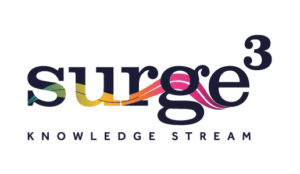Since it was first introduced by Fred Reichheld in 2003 (“The One Number You Need to Grow”, Harvard Business Review) to help measure customer satisfaction … the Net Promoter Score (NPS) has grown to become a crucial tool in the marketer’s arsenal.
The reason that NPS has been so successful and, in many ways become the go to customer satisfaction benchmark, is its simplicity – the ease and speed with which it can be asked. This means that it can be asked more regularly, limit the time that customers need to spend providing feedback, (because as much as we would like them to, not everyone wants to take part in a 20 minute survey once a month!), and it does not require any kind of math degree or statistical tool to analyse.
While many companies, big and small, use NPS as a performance index to evaluate the state of their brand, it is not without its critics for whom it is not specific enough, relied on too heavily by companies and difficult to translate into action. Used properly it can be a helpful metric, but there are a few noticeable caveats which, to garner maximum value from any customer satisfaction program need to be understood and accounted for.
So what should marketers be doing when implementing customer satisfaction to ensure maximum value?
A key starting point is to create a customer interaction plan. Engagement with the right audiences at the right times during the customer journey, as well as at the right frequency to obtain an accurate read on customer sentiment is crucial. Mapping and understating the key stages of this process will enable us to see where we are doing well and where there is the most room for improvement.
To harness the full power of NPS we then need to link up the scores provided with any other information that we hold on customers. This may not always be possible, but a well managed CRM system can enable us to dive into satisfaction scores much more deeply, looking at where the brand is performing well and how we are performing within key segments, cohorts or demographics. Another key benefit of this approach is that we can link satisfaction scores to other key business metrics allowing us to assess the tangible value that an increase (or decrease) in satisfaction score might bring.
We need to look at how we can ‘move the bar’ and increase scores, a point at which many a marketer we have spoken to have found challenging. Beyond purely looking at scores by stage of the customer journey this is the point at which text responses can provide real additional value. By focusing these on what the company could be doing better for all customers (rather than a traditional and not always that useful ‘Why did you give this score?’) we can look to explore key themes for improvement among both promoters and detractors of the brand. Many companies with successful customer satisfaction programs will also take the opportunity at this stage to engage directly with customers to understand their scores, and this can add an additional layer of value by tapping further into the voice of the consumer.
Finally, and arguably the most crucial stage of the process is feeding these responses back into the business, to create a Satisfaction Cycle that empowers the broader business to make tactical changes and improvements to products and services based on 4 key elements:
- Which improvements are we able to make?
- Which audiences would benefit most from these changes?
- How valuable are they to us as a business? (linked to key business metrics)
- What can we do in the short term and what are longer term goals
So is this ‘The One Number You Need to Grow’? That is certainly up for debate. To implement growth plans, any business needs much more information than the NPS on its own provides. It is no golden goose and gives us only a point in time satisfaction score. To harness the power that a well-formed customer satisfaction program can bring we must use it in the right way as part of a range of tools that can measure, identify and most importantly enable us to improve the customer journey. Knowing that customers would recommend our brand is great, but knowing what we can do if they don’t and how to improve the scores across key audiences is where NPS can deliver its true value



